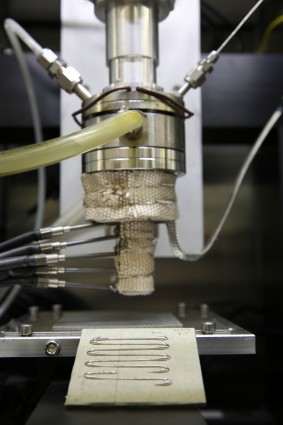Results 1 to 1 of 1
-
03-31-2017, 04:53 PM #1Administrator

- Join Date
- Oct 2016
- Posts
- 2,028
LLNL Develops Direct Metal Writing Printing Method
The issue of porosity in metal 3D prints is something that Lawrence Livermore National Laboratory has been working on for a long time, and now the researchers at the California laboratory have developed a new printing method that they say eliminates the problems of powder altogether - by eliminating powder altogether. The technology, which they call direct metal writing, involves heating a metal ingot until it reaches a semisolid state, something like a metal paste, composed of a core of solid metal particles surrounded by liquid. The material is what is called a shear thinning material, meaning that it behaves like a solid when still, but like a liquid when force is applied - force such as, for example, being pushed through an extruder. It then solidifies again once it's been extruded, and hardens as it cools, so that there's less incorporated oxide and thus less residual stress. Read more at 3DPrint.com: http://3dprint.com/169690/llnl-direc...ting-3d-print/





 Reply With Quote
Reply With Quote



Extruder not feeding during print,...
Yesterday, 02:02 PM in Tips, Tricks and Tech Help